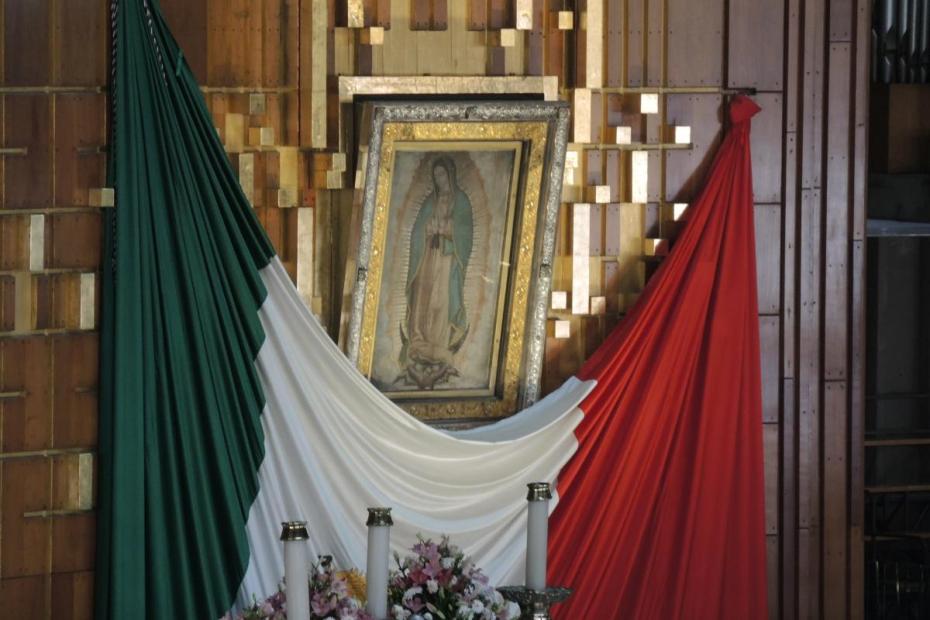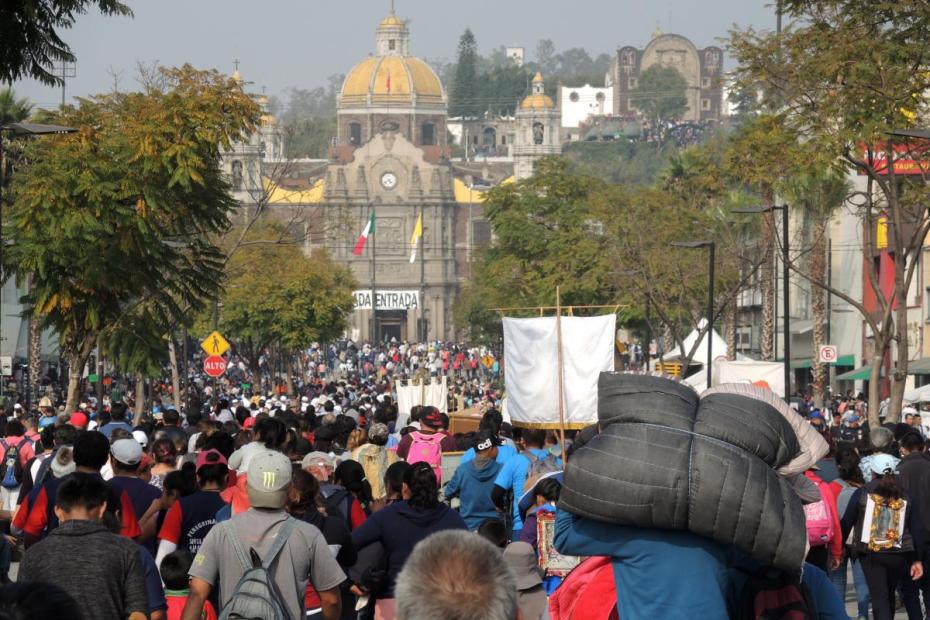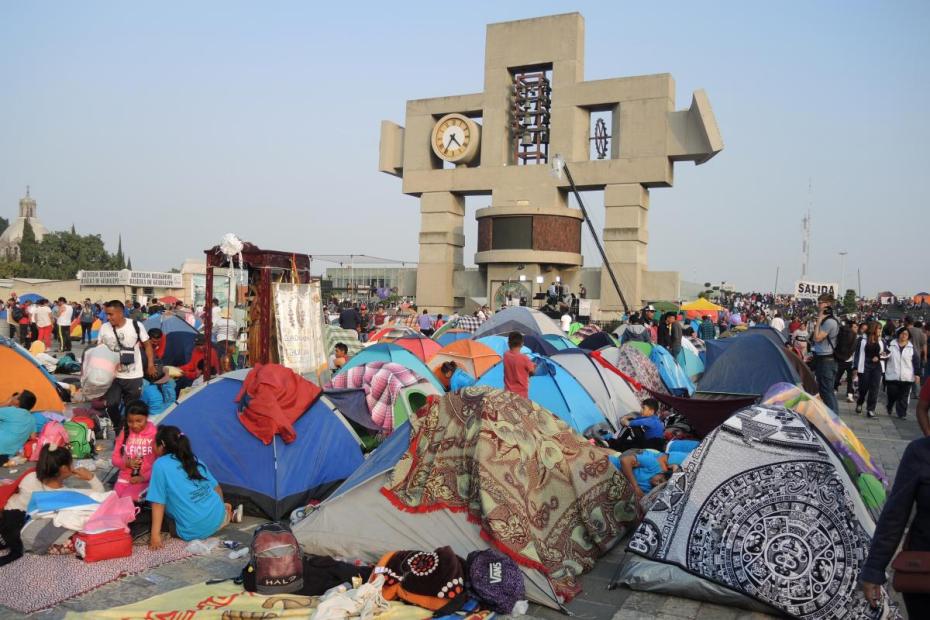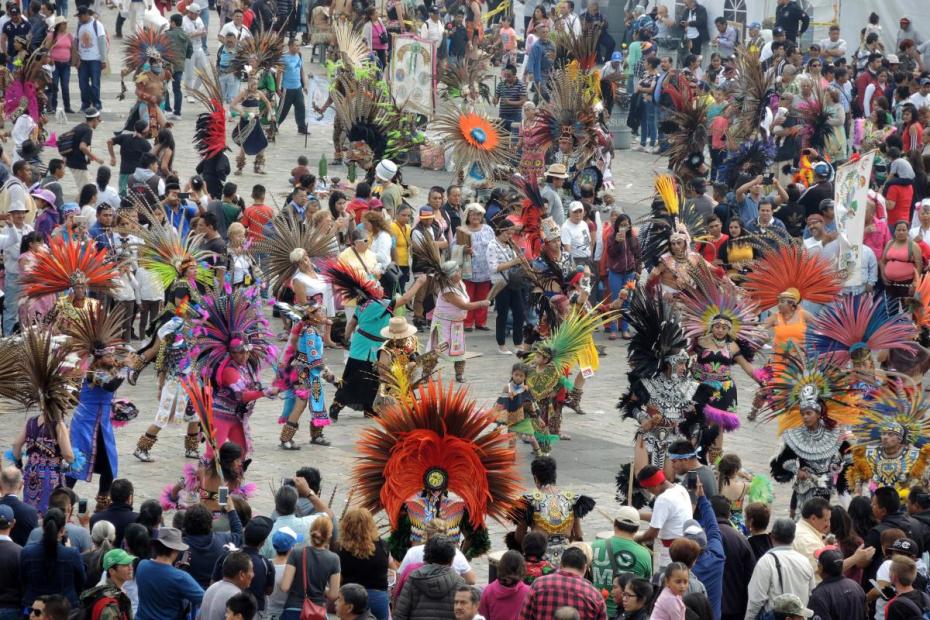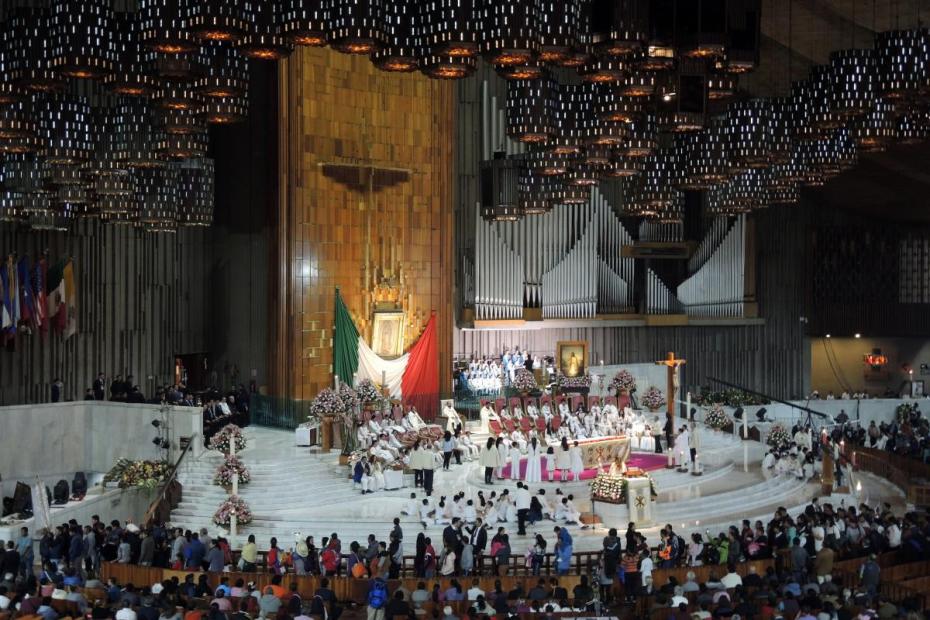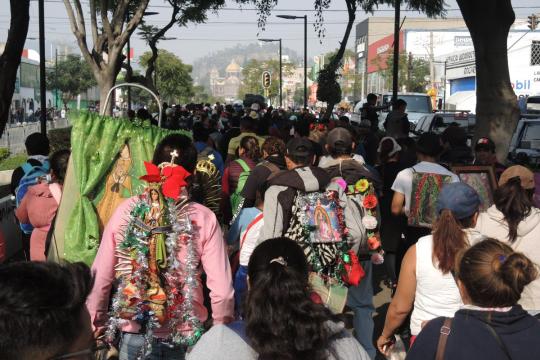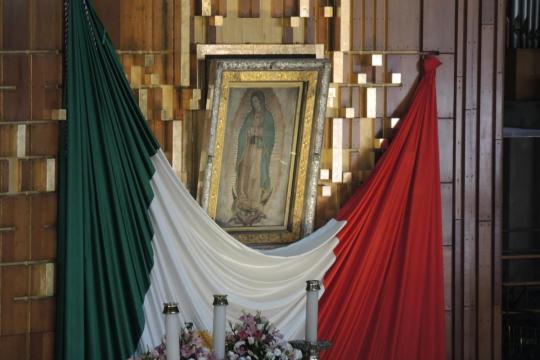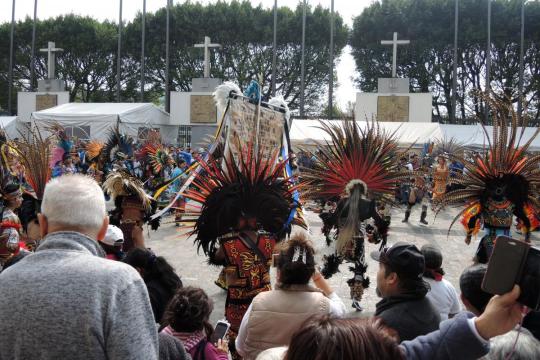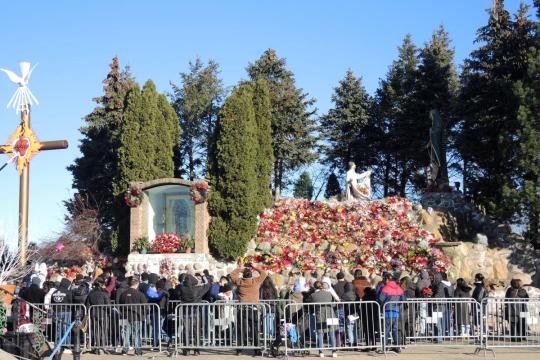Images of Our Lady of Guadalupe are found today in churches and other settings all over the globe, but nowhere is she as revered as in Mexico, where she is a powerful—at times seemingly the most powerful—Catholic, cultural, and national symbol.1 Her image is seen all over: on tiles at the front doors of houses; in pictures and statues in living rooms and bedrooms; in places of honor in the stores and markets; on bracelets, necklaces, holy cards, and tattoos.
December 12, the Feast of Our Lady of Guadalupe, is celebrated in parishes and neighborhoods throughout the country with Masses and dancing and celebration, but the biggest celebration takes place at the Basilica of Our Lady of Guadalupe in Mexico City, a site said to be visited by 20 million pilgrims a year. During her feast and the week leading up to it, streets are closed to vehicles for a wide distance around the huge shrine property, and pilgrims stream into the site. At night they camp out in streets and parks, even in the rear of the basilica’s plaza.
The story of Guadalupe’s appearance to a Nahuatl man, in 1531, shortly after the Spanish conquest, and her promise that she is his mother and would take care of the people, has a powerful hold over Mexican culture. Though Mexican culture, including Mexican Catholic culture, is undoubtedly more multifaceted than any one devotion can capture or embody, what one young man from Hidalgo at the feast said is important: “if people want to learn about Mexican culture, they should come here, this time of year, and they will learn because they will live the feast. She is part of the roots of Mexico.”2
- 1On Guadalupe’s importance in Mexican-American communities in the United States, see Timothy Matovina, Guadalupe and Her Faithful: Latino Catholics in San Antonio from colonial origins to the present (Baltimore: Johns Hopkins, 2005); María Del Soccorro Castañeda-Liles, Our Lady of Everyday Life: la Virgen de Guadalupe and the Catholic imagination of Mexican women in America (Oxford University Press, 2018) includes an especially helpful chapter on how their devotion has been a source of comfort for women in abusive situations; and Jeanette Rodriguez, Our Lady of Guadalupe: faith and empowerment among Mexican-American women (Austin: University of Texas: 1994).
- 2María Del Soccorro Castañeda-Liles, when interviewing women in California about their devotion to the Virgin learned this when, over a cup of cafe con leche, she asked an interviewee, Esperanza, “whether, for her, Our Lady of Guadalupe is a Mexican cultural symbol or a Catholic religious symbol. Esperanza looked at me wordlessly, then asked me to take a spoon I had used to stir my coffee. In a firm but endearing tone, she asked: ‘Could you please do me a favor and remove the milk from the coffee you are drinking?’... México is like coffee with milk. You cannot separate the Virgin of Guadalupe from religion and culture, it is all mixed together.” (55-56).
